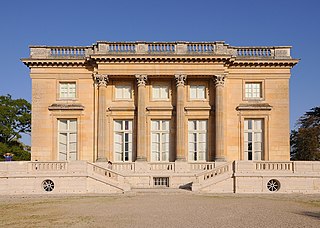This article relies largely or entirely on a single source .(March 2019) |
| |||
|---|---|---|---|
| Buildings and structures +... |
The year 1713 in architecture involved some significant events.
This article relies largely or entirely on a single source .(March 2019) |
| |||
|---|---|---|---|
| Buildings and structures +... |
The year 1713 in architecture involved some significant events.

The year 1819 in architecture involved some significant architectural events and new buildings.
The year 1764 in architecture involved some significant events.
The year 1774 in architecture involved some significant events.
The year 1857 in architecture involved some significant events.

Since ancient times, Greeks, Etruscans and Celts have inhabited the south, centre and north of the Italian peninsula respectively. The very numerous rock drawings in Valcamonica are as old as 8,000 BC, and there are rich remains of Etruscan art from thousands of tombs, as well as rich remains from the Greek colonies at Paestum, Agrigento and elsewhere. Ancient Rome finally emerged as the dominant Italian and European power. The Roman remains in Italy are of extraordinary richness, from the grand Imperial monuments of Rome itself to the survival of exceptionally preserved ordinary buildings in Pompeii and neighbouring sites. Following the fall of the Roman Empire, in the Middle Ages Italy remained an important centre, not only of the Carolingian art, Ottonian art of the Holy Roman Emperors, Norman art, but for the Byzantine art of Ravenna and other sites.

Neoclassical architecture, sometimes referred to as Classical Revival architecture, is an architectural style produced by the Neoclassical movement that began in the mid-18th century in Italy, France and Germany. It became one of the most prominent architectural styles in the Western world. The prevailing styles of architecture in most of Europe for the previous two centuries, Renaissance architecture and Baroque architecture, already represented partial revivals of the Classical architecture of ancient Rome and ancient Greek architecture, but the Neoclassical movement aimed to strip away the excesses of Late Baroque and return to a purer, more complete, and more authentic classical style, adapted to modern purposes.
This is a list of events related to architecture in 1745.
The year 1703 in architecture involved some significant architectural events and new buildings.
Events from the year 1748 in art.

The Galli–Bibiena family, or Galli da Bibiena, was a family of Italian artists of the 17th and 18th centuries, including:

The Basilica of San Giovanni dei Fiorentini is a minor basilica and a titular church in the Ponte rione of Rome, Italy.
Events from the year 1754 in art.
Events from the year 1699 in art.
Events from the year 1684 in art.
Giorgio Pullicino was a Maltese painter, architect, and professor of drawing and architecture at the University of Malta. He is known for his harbour views painted in a number of media, and he is also considered to be one of the first neoclassical architects in Malta. He produced designs for a number of buildings, but the only structure which is definitely proven to have been designed by him is a monumental obelisk known as the Spencer Monument. However, several other buildings including the Monument to Sir Alexander Ball are widely attributed to him.